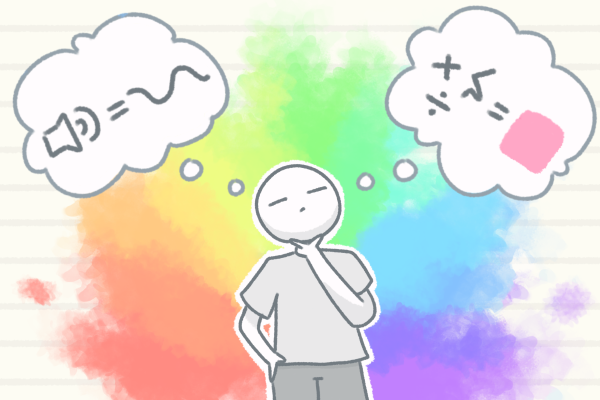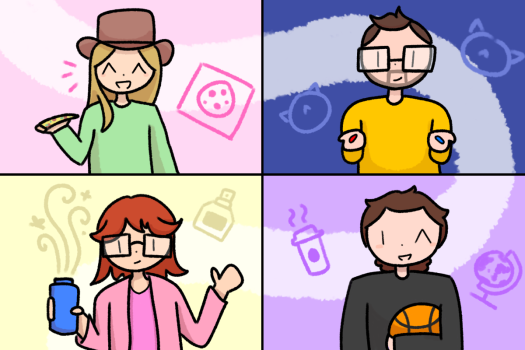‘Turning Red’ review
Samuel Rosenthal ’24 reviews Pixar’s newest comedy, coming-of-age story.
“Turning Red” was released on Feb. 21.
“Turning Red” has garnered many divisions in the film community. I’ve found that people either love it, calling it ‘easily the most relatable Pixar film’, or hate it, calling it ‘the worst Pixar film to date’. As of now, “Turning Red” has the second largest critic-audience divide on Rotten Tomatoes since “The Incredibles”. I am among the minority who are somewhere in between.
The film is set in 2002 Toronto as Meilin Lee, a thirteen-year-old Chinese-Canadian girl, goes to school, works for her family’s temple, and hangs out with her best friends. Following an embarrassing altercation with her mother and another person, Meilin wakes up the next morning as a ginormous red panda. According to her family, they possess a “curse” that is passed between generations that as quoted by the movie, “any strong emotion will release the panda”. Meilin’s parents soon explain to her that there is a way of eliminating these “accidents” by concealing the red panda in a charmed trinket on the night of a red moon by ritual. The only problem is that the next red moon is in a month, but in the meantime, Meilin must keep her identity hidden.
The movie announcements were enticing, promising a plot taking on mother-daughter relationships as well as dealing with the often complicated subject of puberty…in its own unique way, but still a subject that many other studios would maybe only dip a toe into. The film had me really excited, especially the fact that it was Pixar, a studio whose worst film would be another studio’s average film. That is until I saw the official trailer.
It will distance itself from some audiences due to its topics but it will also cause some audiences to love it even more because they can relate to it.
The trailer showed Meilin narrating her everyday life in a quick-paced, trying-to-be-humorous manner with her friends beatboxing in the background. The humor you get in the trailers is what you get in the final product. If the humor of the trailer is funny for you, you will find some laughs in the movie, but when you feel like the movie is trying to get a laugh out of you, it just makes it hard to watch. For me, this was mostly the case. Heading into the film, I chose not to think about it, figuring that the trailer was merely an intro into the characters and that the movie would delve into with its deep messages. What did I find out? The movie repeats the same beats as the trailer and by the end, you do get character development, only it feels like it is all forced.
I think that may be the reason why so many are divided over the movie. This movie has topics and situations that not everyone has experienced. Pixar is used to producing out of this world, unique concepts where most people can relate to their themes, but this film has a more “grounded” plot with undertones and themes that a lot of people have not experienced. This works to both the film’s advantage and disadvantage. It will distance itself from some audiences due to its topics but it will also cause some audiences to love it even more because they can relate to it and have a personal connection with its themes. Speaking of relatability, this is Pixar’s first Asian-led film with well-represented diversity in its casting and characters as well as being Pixar’s first Asian-female directed film. Though the director makes some great production choices, there are some narrative issues with “Turning Red”.
You can tell that the animators are flaunting their skills (in a good way) and it is incredibly beautiful to look at.
By the first 30 minutes of the film, you can predict what will happen by the end. This is one of the main issues of the movie. Due to its predictability, you don’t gain as much from the experience as you should. However, this movie had so much potential! The relationship between Meilin and her mother is so investing, that it is disappointing when it shifts its focus back to Meilin and her friends. Not that Meilin’s friends are not interesting characters, it’s just that Meilin’s mother has such an interesting character arc that it could have been even more impactful if more time were spent developing the relationship between Meilin and her. There is a great scene near the end where it shows Meilin’s mother as a teenager after a fight with her mother, adding a very powerful parallel to her relationship with her daughter. That individual scene boosts my final score for the film.
The film also tackles parental expectations placed on their children and delivers very powerful themes of becoming your own self. For the most part, it delivers the themes well, however, near the end there are some weird scenes that show Meilin “rebelling” against her mother. However, after this scene, the film becomes far better! The final emotional scenes paired with the stellar animation are some of the best aspects of the movie overall. There is a scene near the start of the film where Meilin’s father, who is the best character in the movie, is shown cooking. You can tell that the animators are flaunting their skills (in a good way) and it is incredibly beautiful to look at. Clearly, this film has a top-notch production and it shows.
Overall the film is very difficult to analyze as it does some elements incredibly well, however it lacks in some aspects. “Turning Red” receives 2.5/5 stars from me for its top-notch animation, concepts and important, relevant themes. However, the film can be too predictable and it makes some ill-chosen decisions with its narrative. Check out the trailer and if it looks interesting, you should definitely give “Turning Red” a try, but if it isn’t your style, you can maybe skip out on this watch.
Your donation will support the student journalists of West High School. Your contribution will allow us to purchase Scholarship Yearbooks, newsroom equipment and cover our annual website hosting costs.

(he/him) Sam Rosenthal is a Senior at West High and this is his second year on staff. This is his first year as a reporter. Samuel loves bowling, playing...

















